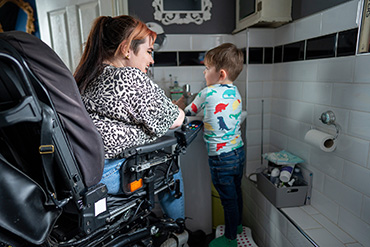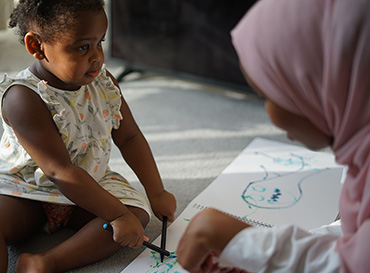Practice Note on Beliefs and Biases
Taking action
“Once we know and accept we have bias, we can begin to recognize our own patterns of thinking. With awareness and a conscious effort, we have the power to change how we think and to challenge the negative or harmful biases within ourselves.” National Museum of African American Heritage and Culture: Talking about Race
Practice self-awareness
Think about your own identity in relation to age, disability, race, religion, family structure, gender, immigration, or legal or socio-economic status.
- Reflect on your own experiences with injustice, racism or discrimination
- Reflect on your own experiences in relation to any advantages or privileges you have
- Recall a situation that first made you aware of your identity in relation to:
- society and what it portrays as valuable, ‘good’ or ‘bad’ (through messages in media, books, advertising, access to particular foods or care products, etc.)
- your peers
- your educators
- your community
- other family members
- learning materials, visuals or curriculum
- How did/does this make you feel?
- How have your experiences influenced your professional practice?
Where did your beliefs come from?
- While growing up, what did you learn about human differences (e.g., race, sexuality, gender, gender roles, language, socio-economic status or religion)? What messages were conveyed through:
- family members, mentors, educators or peers?
- learning materials, images, books, social and physical environments?
- society, media, radio, music, cartoons or movies?
- What messages impacted you the most, both positively and negatively?
- Recall when you became aware of human differences. How did you respond or feel?
- Can you describe an interaction with someone that changed your perspectives and professional practice?
- What was the context? What was the outcome?
What reinforces your beliefs?

- How do you feel when an assumption you make about someone proves you right? What about when it proves you wrong?
- Being ‘right’ is known as confirmation bias – why can it be problematic?
- Choose a new media source you don’t typically reference for a different point of view. What has that process been like for you?
Think about your beliefs today
-
- Have any of your early beliefs changed? What happened to change it/them?
- What did you learn about yourself and how did it positively influence you?
- What early beliefs remain for you and why?
- In what ways is your practice shaped by your assumptions, beliefs and biases?
- What beliefs positively support your practice?
- Which ones hinder our practice and need to change?
- Do you treat anyone in your practice setting differently based on your beliefs about them or their family? What are the potential impacts?
- Do you interact with the ‘good’ children while managing children you view as ‘challenging’?
- Do you exclude or avoid anyone based on your beliefs and biases?
- Do you favour any person or perspective based on your beliefs and biases?
Make a commitment
With this new and growing awareness about the impact of your beliefs and biases, what steps do you need to take to change your practice? There are a wide range of resources written by local, national and international organizations to help guide your learning and support you in becoming aware of how beliefs and biases influence your thoughts and actions.
-
- deepen your awareness of the historical, social and political injustices and privileges that exist for certain individuals, groups and communities;
- look for information sources that:
-
- provide views that differ from your own; or,
- amplify voices of people from marginalized communities;
-
- connect with others and learn from and with each other;
- discuss how your beliefs and biases influence or have influenced your practice, decisions and behaviours; and,
- be sure to pause, resist judgment and consider your response when confronted with new ideas and information.
